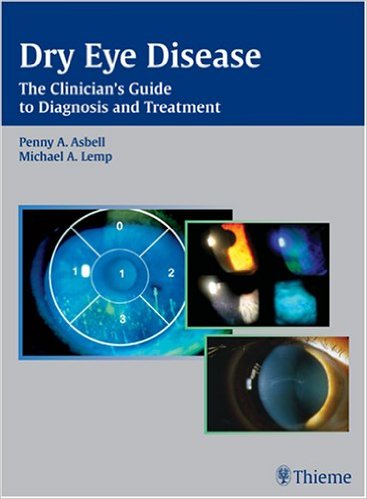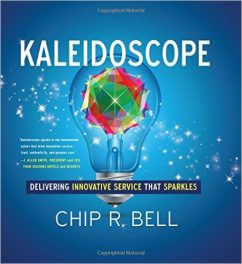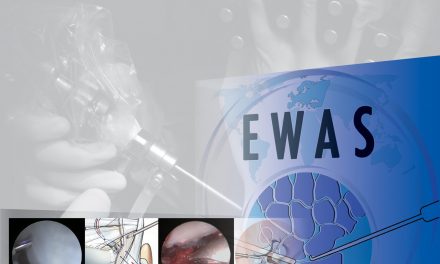Editors: Penny A. Asbell, MD; and Michael A. Lemp, MD
Publisher: Thieme – 215 pages
Book Review by: Nano Khilnani
Dry eye is a condition, disorder, or disease that results from a breakdown in the layer of tears that coats the front of the eye – the cornea and the conjunctiva. This layer is called the tear film. A breakdown of this layer, as well as insufficient tear production or excessive tear evaporation, can result in dry eye.
In normal situations, this tear film is a healthy, stable and even layer that provides the cornea and conjunctiva – the interpalpebral ocular surface – with a good buffer or protection from damage with constant exposure to air. This layer also enables proper focusing required for clear vision. With a dry eye condition wherein the tear film is unhealthy and breaks down, not only is there irritation and ocular discomfort, but also vision becomes unstable.
The editors of this book – Dr. Penny Asbell and Dr. Michael Lemp – point out in the Preface that more than three of every ten patients that visit an ophthalmologist complain about dry eye symptoms, according to a recent survey. And ‘recent’ refers to 2006 when this book was published.
The Beaver Dam (Wisconsin) Eye Study measured the incidence of dry eye in about 5,000 subjects between 1988 and 1990. The results showed that of those who had dry eye symptoms, 10.7 percent were in the age group 48-59 to as many as 17.9 percent in people over 80 years old. This study is mentioned in chapter 1, Epidemiology of Dry Eye Disease, authored by Alan Tomlinson, PhD, a Professor of Vision at Glasgow Caledonian University in Glasgow, Scotland.
He wrote in this 2006 book that about 4.3 million Americans suffer from dry eye disease, and about seven to 10 million self-medicate with artificial tear preparations at a cost of over $100 million a year. Today in 2016, the numbers are likely higher, as more and more people are beginning to wear contact lenses, a factor that is associated with dry eye.
Dry eye disease is not anymore just an insignificant issue these days, with more and more people worldwide affected by it, and presenting themselves with a number of symptoms to their eye care doctors – optometrists and ophthalmologists.
This book takes a close look at dry eye, with 27 specialists in ophthalmology including the two editors named above, all MDs and PhDs from the United States and six other countries – France, Germany, Italy, Japan, Turkey, and the United Kingdom – providing content for the 18 chapters that constitute this book.
We list the titles of the chapters below to give you an overview of what topics you will find discussed in this book:
- Epidemiology of Dry Eye Disease
- Pathogenesis and Classification of Dry Eye Disease
- Patient History, Symptoms, and Questionnaires for Dry Eye Disease
- In-Office Tests for Dry Eye Disease
- Non-routine Tests for Dry Eye Disease
- Diagnosis and Management of Lid and Ocular Surface Disorders
- Increasing Tear Quality with Artificial Tears and Reducing Evaporation
- Modulation of Inflammation and Immunity in Dry Eye Disease
- Complementary and Alternative Medicine to Treat Dry Eye Disease
- Innovations in Treatment of Dry Eye Disease: Mucin Stimulators, Hormone Replacement
- Dry Eye and Contact Lens
- Refractive Surgery and Dry Eye Disease
- Diagnosis and Treatment of Severe Dry Eye Disease
- Surgery for Dry Eye Disease
- Systemic Issues and Dry Eye Disease
- Lessons Learned from Clinical Trials Treating Dry Eye Disease
- Keeping Current on Medical Information and Drug Development
- Future Trends in the Treatment of Dry Eye Disease
The editors point out that you should keep these key issues in mind as you go through the chapters of this book:
- Dry eye disease is a common problem.
- It is increasing in prevalence worldwide.
- It is a multi-factorial problem that has varying incidence for different ages, sexes, and ethnic groups.
- It can occur in conjunction with other conditions such as contact lens use, refractive surgery, and the use of eye drops chronically for glaucoma.
- New approaches to diagnosing dry eye disease will lead to improve recognition of the disorder.
- New treatment options, including over-the-counter preparations and prescription pharmaceuticals, will become available in the next few years.
- The study of dry eye is a rapidly expanding and changing field that requires the practitioners to stay up to date in order to provide state-of-the art treatment for patients.
There are not too many books out there on dry eye disease. This one has quite extensive coverage on this condition. It is authoritative, as most of the 27 contributors book are practicing ophthalmologists who have acquired not only the specific knowledge but experience with patients as well, that has enabled them to gain real-world insight on the subject.
Editors:
Penny A. Asbell, MD, FACS, MBA is Professor of Ophthalmology and Director of Cornea and Refractive Services in the Department of Ophthalmology at Mount Sinai School of Medicine in New York, New York.
Michael A. Lemp, MD is Clinical Professor of Ophthalmology at Georgetown University and George Washington University in Washington DC.







